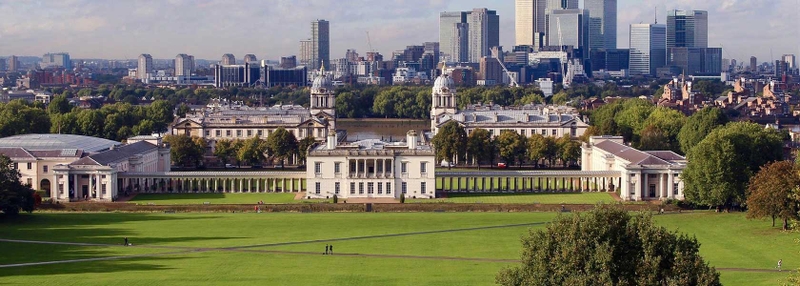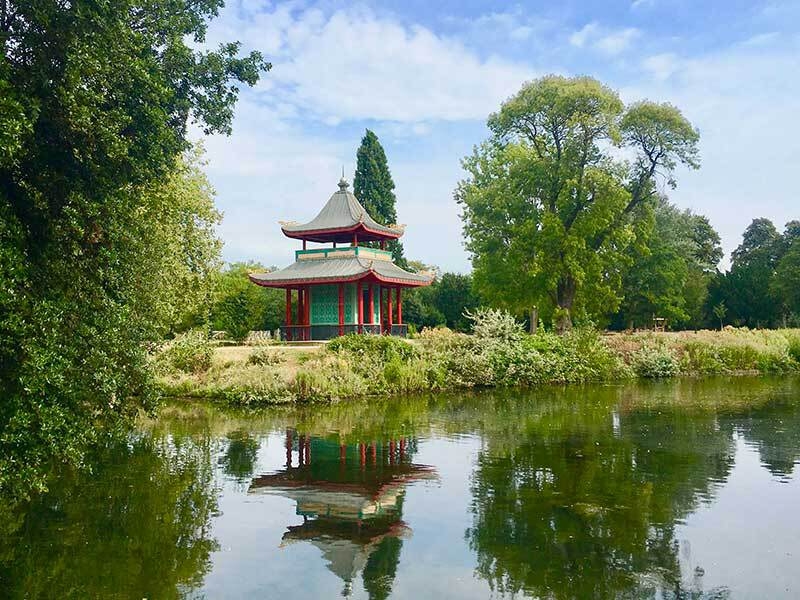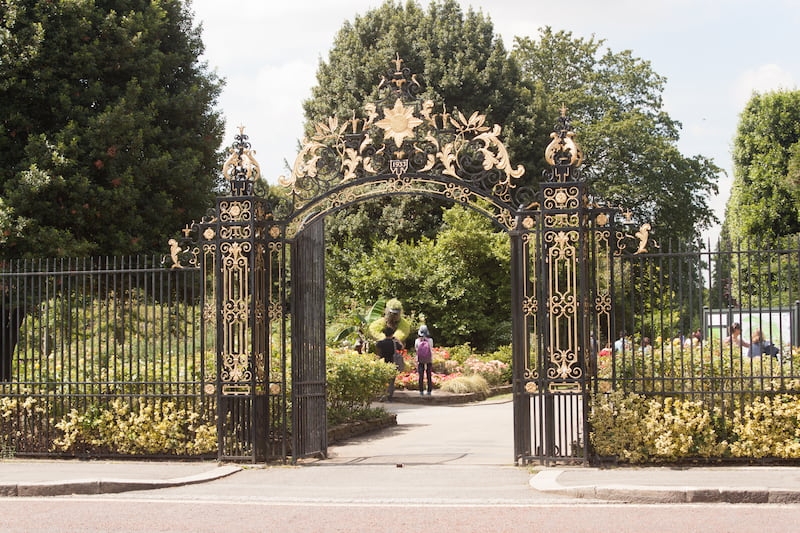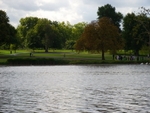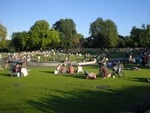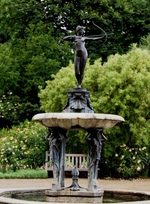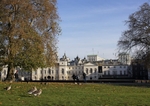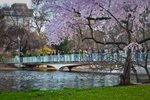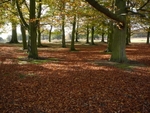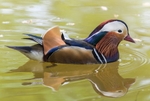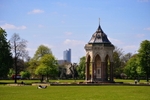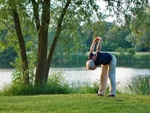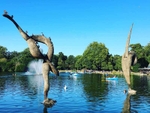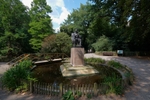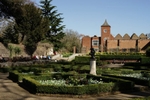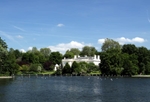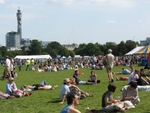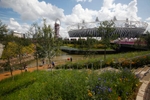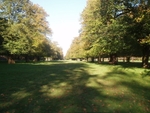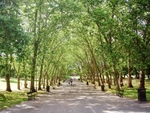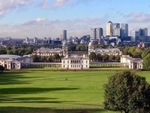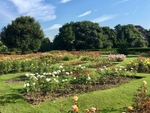1. Hyde Park
One of the eight Royal Parks, Hyde Park was originally a hunting ground for the nation’s monarchs.
Today it is of one of London’s most popular green spaces, hosting a wide range of activities and events. Hyde Park covers around 350 acres in central London and is one of the most famous city parks in the world.
There is something of interest for everyone in Hyde Park. The Serpentine lake is a big attraction, where rowing and pedal boats can be hired once winter has been and gone. The Serpentine lido provides an iconic spot for open water swimming over the warmer months. If water is not your thing, why not visit the park stables and take to horseback to explore the park.
There are numerous memorials and statues to admire as you stroll through Hyde Park, such as the Diana Memorial fountain and the poignant 7 July memorial. The Rose Garden in the south east corner of the park provides a beautiful landscape, with the colourful seasonal displays a firm favourite among park visitors. The garden is one of the park’s important habitats for wildlife.
The park’s central location makes it easy to reach by all forms of public transport, with Marble Arch and Hyde Park Corner two of the closest tube stations. Hyde park is well served with cafes and refreshment points, including the Serpentine Bar and Kitchen where you can choose from a breakfast or lunch menu while sat overlooking the lake.
2. St James’s Park
St James’s Park is the oldest of London’s Royal Parks, one which remains at the heart of ceremonial London.
It is the second smallest of the Royal Parks too, although being surrounded by iconic landmarks like Buckingham Palace and Clarence House, it is one of the most frequented by visitors. Another quirky attraction is the park’s resident pelicans, who were first introduced in 1664 and now reside alongside 15 species of wildfowl on the park’s lake.
St James’s Park’s location means it still features heavily in royal ceremonial events, including Trooping the Colour held on Horse Guards Parade within the park. Royal history features prominently in the landmarks around the park, including the Queen Victoria memorial and the Queen Mother memorial. The Mall and Admiralty Arch are further famous landmarks visitors to St James’s Park will see.
The beautifully designed Buckingham Palace flower beds were laid out in the park as part of the overall design for the Queen Victoria Memorial. A more recent memorial honours Diana, Princess of Wales. This is a memorial walk passing through four of the Royal Parks including St James’s Park, with plaques placed along the route marking locations associated with the Princess.
The park is open between 5am and midnight throughout the year, with St James’s Park and Westminster two of the nearest tube stations. Two cafes plus refreshments points serve the park, including St James’s cafe right in the centre of the park where a tempting bacon sandwich costs £5.75 and main meals start from £12.95.
3. Richmond Park
Richmond Park is the largest of London’s Royal Parks, providing 2,500 acres of green open space just a stone’s throw from the centre of the capital.
The park is a site of Special Scientific Interest as well as a National Nature reserve. The varied landscapes of hills, woodlands and grasslands are a haven for some of Britain’s most iconic wildlife.
The park is probably best known to most for its roaming herd of over 600 wild red and fallow deer. However, the park also hosts a wide variety of birds, bats, insects and smaller mammals. The deer helps Richmond Park maintain the largest area of lowland acid grassland in London, and the park is also renowned for its ancient trees and in particular its mighty oaks.
Make sure you visit the lovely Isabella Plantation, a 40 acre woodland garden featuring a collection of Kurume azaleas introduced from Japan. This huge park has much to look out for as you wander around, including fantastic views across the Thames Valley from King Henry’s Mound, a former pre-historic burial site dating from the Bronze Age.
Food and drink can be found at refreshment points around the park, as well as at the Roehampton Cafe or Pembroke Lodge. There are two children’s playgrounds to help keep the little ones amused, while a visitor’s information centre is located close to Pembroke Lodge.
4. Victoria Park
Victoria Park is a large expanse of greenery in East London and one of the capital’s most visited parks.
Set across 218 acres of varying landscape, Victoria Park stages a host of events through the year, from large summer festivals to weekly local markets. The western and eastern sections of the park are separated by Grove Road.
Known affectionately as Vicky Park to locals, this is a park packed with amenities and lovely settings. Within the last decade Victoria Park has undergone a series of major improvements, with many original features restored. One such area is the lake in the west of the park, where you can hire pedalos in the summer. The Chinese pagoda on the banks of the lake has also been restored to its former glory.
An old English garden, trails, monuments, sculptures and a skate park are further attractions of this lovely park. There is a strong sports presence too with football and crickets pitches, plus tennis courts and a bowls club. For families with young children there are two playgrounds to help the little ones enjoy their day out at the park even more.
The Pavilion cafe, sat overlooking the lake, serves breakfast, brunch and lunch each day of the week, while the centrally located Hub Cafe offers another welcoming place for refreshments. You can access Victoria Park in Tower Hamlets every day from 7am till dusk, with Bethnal Green and Mile End on the Central Line the closest tube stations.
5. Holland Park
Holland Park transports you to the English countryside while taking a stroll in west London.
With a large of area of woodland, lovely lawns, formal gardens and an area for sport, the varied landscape of the park is ideal for people and wildlife. Holland Park extends to around 54 acres and was the grounds of Holland House, a mansion largely destroyed through bombing in the second world war.
A highlight of Holland Park are the formal gardens, including the Kyoto garden which opened in 1991. This Japanese-style garden was a gift from the city of Kyoto in recognition of the friendship between Japan and the UK. Waterfalls and ponds containing koi carp help bring a feeling of serenity to the garden.
The large woodland area to the north of the park is home to an array of birds, small mammals and insects. Enjoy the colourful sight of the peacocks wandering around some of the more formal areas. The orangery, tennis courts and giant chess set all add to the unique feel of Holland Park. An ecology centre within the park offers holiday activities for the kids, who will also enjoy the adventure playground
When it is time for refreshments you can head to the Holland Park cafe, serving home-made meals using locally sourced produce. This lovely park is located in Kensington, not far from Hyde Park. It is served by nearby Holland Park tube station.
6. Regent’s Park
Regent’s Park is another former royal hunting ground which now forms one of the largest and prettiest of central London’s open spaces.
This is a park packed with things to see and do, as well as somewhere to enjoy a stroll while watching the diverse variety of British wildlife that makes Regent’s Park its home.
Regent’s Park is perhaps most famous as the home to London Zoo, which has one of the largest collections of animals in the UK. However, the park also has numerous noteworthy memorials, fountains and statues marking significant historical occasions, as well as a lake where you can hire pedalos and boats from the end of March. The famous Regent’s Park bandstand can also be found near the lake.
The varied landscapes, including tree lined paths, are a wonderful element of the park. There are gardens to explore too, including the Queen Mary’s gardens toward the south of the park. This garden contains the capital’s largest collection of roses, totalling around 12,000 plants, a spectacular sight when in full bloom.
Regent’s park is well served with cafes and refreshment points, including the centrally located Regent’s Bar and Kitchen where you can get a wood-fired pizza from £11.75. The park is also renowned for the events it stages through the year, including open air theatre. Adjacent to Regent’s Park is Primrose Hill, well worth a visit for the spectacular views it offers across the capital.
7. Queen Elizabeth Olympic Park
This recent addition to the impressive amount of green space within London marks the location where sport’s greatest show came to London in 2012.
The park still contains many of the iconic sporting venues used in the Olympics such as the aquatic centre, which are now open for public use. However, the beautifully landscaped parklands are worth a visit in their own right.
The parklands and wetland bowl are located in the northern section of the park. These areas are home to a vast range of different bird and amphibian species as well as wildflowers and lawns, and are ideal picnic country. You will also be able to stroll through and enjoy intricately planted gardens divided into four climatic zones, a haven for nature’s vital pollinators.
You can wander the park at your own pace or perhaps follow one of the five trails, including the art trail and parkland and wildlife trail. Another huge attraction is the Arcelor Mittal Orbit, the tallest and longest tunnel slide in the world, offering spectacular views across London. The braver among you may opt to experience the UK’s highest freefall abseil, a heart in the mouth 80m journey down.
The legacy of the 2012 Olympics means the Queen Elizabeth Olympic park is teeming with things to see and do for the whole family, including children’s playgrounds and pedalo rides. The parkland area is open all year round and free to enter. There are plenty of refreshment options when required, with two main cafes plus food kiosks in the park.
8. Bushy Park
Another former hunting ground, Bushy Park is the second largest of London’s Royal parks.
Located opposite Hampton Court palace, Bushy Park is a lovely mix of parkland, waterways and gardens. Similar to Richmond Park it is well known for the red and fallow deer that make Bushy park their home.
There is over 1000 acres to explore in Bushy park. The Waterhouse Woodland makes up 60 acres of this total, with a lovely walkway through this tranquil area of trees and waterways. These waterways and the acid grassland are an important habitat for wildlife and wildflowers in London.
The Diana Fountain is a must see feature of the park. The fountain sits on an ornate marble pedestal within a pond, and is a bronze statue of the goddess. She is surrounded by statues of four boys, four water nymphs and four shells and was restored to its former glory in 2009. The Upper Lodge Water Gardens with its cascading pools of water is another popular spot in the park.
There is pedestrian access to Bushy Park at all times, although the water gardens are not open on Mondays. The Pheasantry cafe by the entrance to the Woodland Gardens serves a range of hot and cold food and drinks from 9am each day. Next to the cafe is the visitor centre, where you will find all the information you require about the park.
9. Crystal Palace Park
This treasured park in south London was originally the grounds of the re-located Crystal Palace exhibition building.
The Crystal Palace itself burned down in 1936, but the grounds have become one of London’s most popular parks as well as the home of the National Sports Centre, which was completed in the 1960s.
Crystal Palace park has many attractions to entertain all ages. A fishing lake, boating lake, maze, children’s playground and children’s city farm are just a flavour of what you will find when you visit the park. A fun and quirky sight are the series of life-size dinosaur sculptures positioned around the park.
The Italian terraces are one of the remaining elements of the Crystal Palace building and provide an insight to the scale of the original site. There are great views from the grass bank above the upper terrace. Look out for the granite sphinxes which flank the terraces.
The park is open all year round with the gates closing around dusk, dependent on the time of the year. The children’s city farm opens every day except Wednesday between 12pm and 3.30pm. The park’s concert bowl has a great heritage and has hosted some of the great names of music on its stage.
10. Greenwich Park
Greenwich Park is the oldest of the enclosed royal parks and offers a lovely green sanctuary while visiting some of London’s most iconic attractions.
The park is sat on a hill top and this location lends itself to some of the most spectacular viewing points across the river Thames.
The park provides 183 acres of open green space by the river, 13 acres of which makes up a large grassland enclosure that includes a deer park. The park has several gardens to admire, including the popular Rose garden, the Flower garden and the formal herb garden. The variety of landscapes makes for a great wildlife habitat.
Greenwich Park is an ideal location to retreat to and relax when visiting the major Greenwich maritime attractions. Within the park you will find the National Maritime museum, the Royal Observatory and the Meridian Line. The General Wolfe statue is a grade II listed structure which commemorates the victory in Quebec over the French of the general who was born in Greenwich.
Pedestrians can access the park all year round from 6am, with car access an hour later from 7am, The car park is accessed via the Blackheath gates entrance. There are three cafes sited around Greenwich park, including the Pavilion cafe by the Royal Observatory, which has a large garden you can sit in and enjoy during the warmer months.
